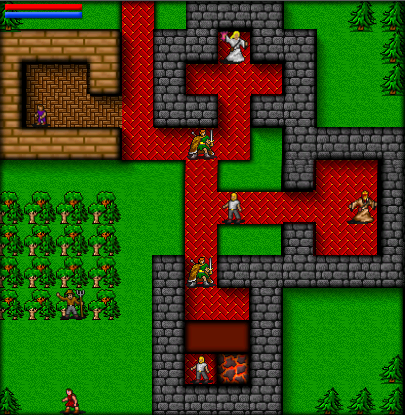Okay. I’m thinking about making some graphical improvements to Inaria. You might remember from when I was doing the iPhone version that it looked a bit…well, better.

Those improvements, which make the levels pop up and down, were written by my good, dear friend Ryan Clark.
So why didn’t I use them for the current version of Inaria? Well…because I thought they might clash with the retro mystique I was going for. It might also clash with the “black squares” result of the visibility algorithm.
But now I’m thinking seriously about putting them back in.
Thoughts? Yay, nay?
